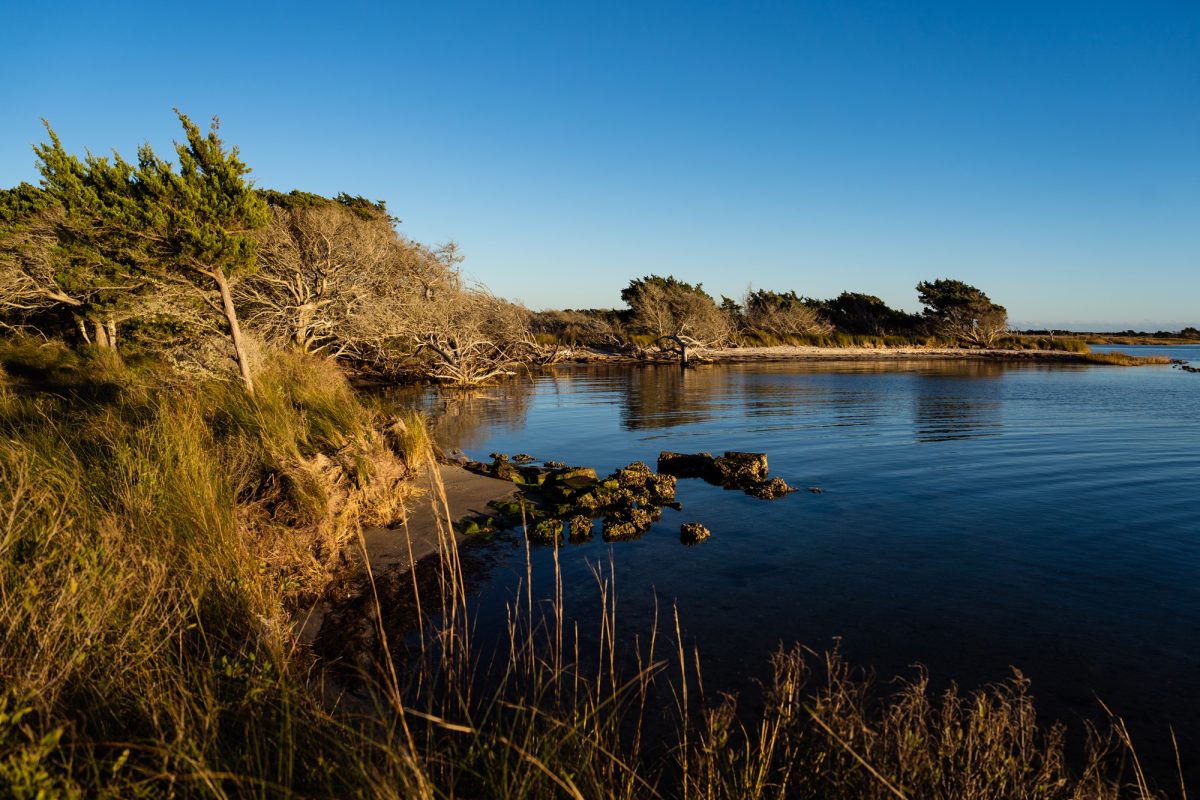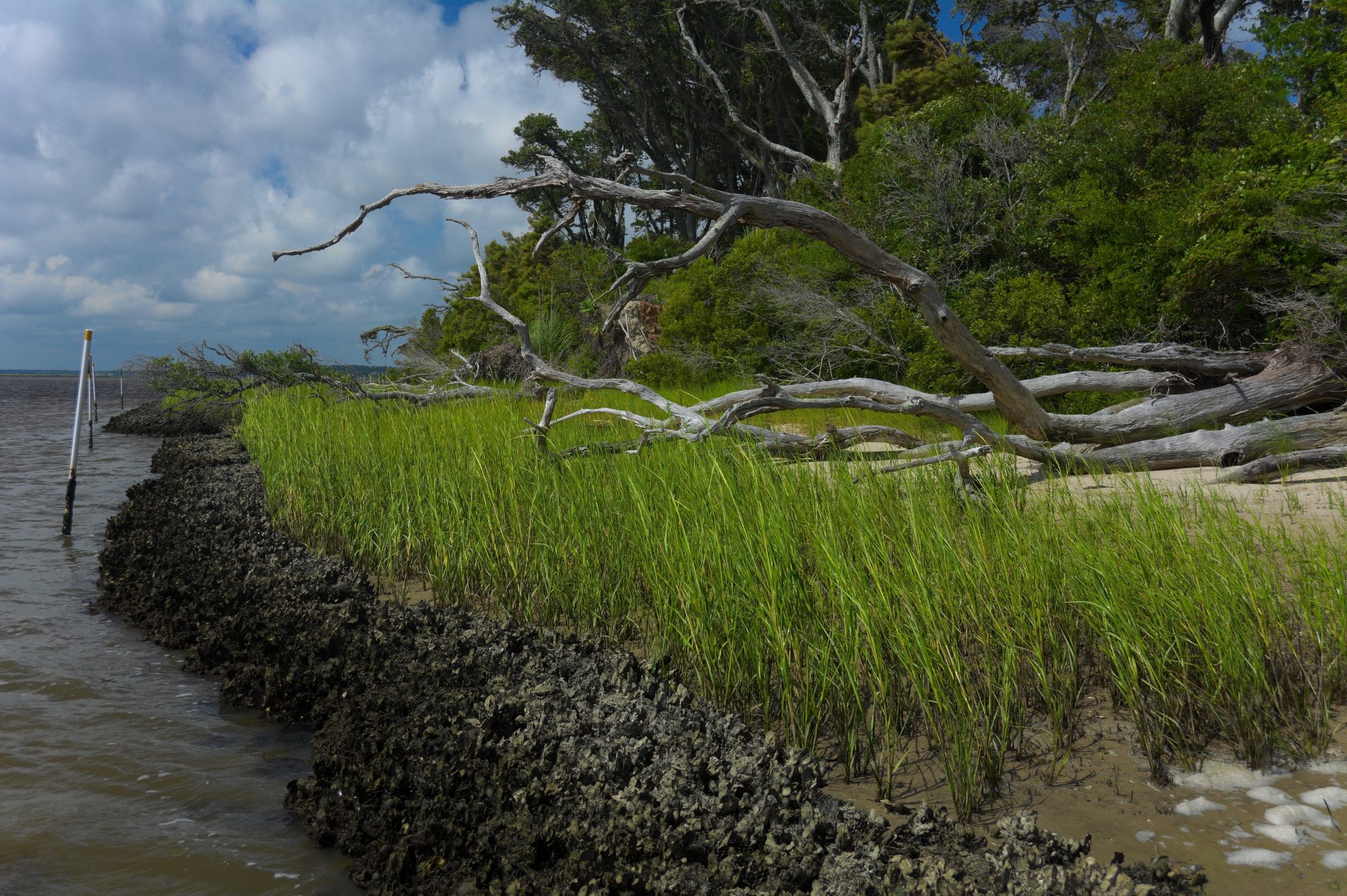Along our state’s 12,000 linear miles of estuarine shorelines, the Coastal Federation encourages public and private waterfront property owners to use environmentally beneficial shoreline stabilization alternatives that will both protect their investments and provide for good water quality and habitat that support more fish and wildlife.

Our Efforts
- Demonstrate the usefulness and effectiveness of living shorelines
- Work directly with government agencies and private property owners to assist them with the design, permitting, and construction of living shorelines
- Provide financial assistance for projects by obtaining grants and through a Living Shoreline Cost-Share Program
- Address regulatory roadblocks that discourage agencies and landowners from installing living shorelines even when they are the most practical and environmentally friendly, cost-effective erosion control option
- Provide training and education to shoreline stakeholders including property owners, contractors, and engineers
Streamlined Permits for Many Living Shorelines Projects Now Possible
Permits to build living shorelines of 500 or less linear feet in length got a lot easier in 2019 along our coast after the Federation successfully worked with the N.C. Division of Coastal Management, U.S. Army Corps of Engineers, and a host of other federal and state regulatory agencies as well as academic researchers to simplify their general permit process for marsh sills.
The effect of this coordinated state and federal permit process is that property owners and their contractors can now get approval to build living shoreline projects as easily as they can get approval for bulkheads and other hardened techniques.
Regulatory Reform to Facilitate the Proper Use of Living Shorelines is Needed
Despite support and funds from federal and state leaders to use nature-based strategies such as living shorelines to enhance coastal resilience and ecosystems, existing federal and state permit review procedures still create significant obstacles and delays in obtaining permits to construct larger-scale living shoreline projects that exceed 500 feet in length. These obstacles have the unintended consequence of pushing property owners to use less regulated but more environmentally damaging shoreline stabilization methods such as seawalls and bulkheads. To arrive at reasonable and workable regulatory standards for large-scale living shoreline projects, the Federation has established a Living Shoreline Policy Working Group to evaluate how to revise and update agency rules so that regulatory reviews result in the selection of the most environmentally beneficial shoreline stabilization methods.
How We Got Here
For a quick review of accomplishments, lessons learned, and living shoreline permit categories, check out this presentation on Living Shoreline Permitting in NC.
July 2019: Amendment 15A NCAS 07H .2700
July 2019: Amendment Effective for 15A NCAS 07H .2700
April 2019: Temporary Amendment Effective for 15A NCAC 7H .2700
The Coastal Resources Commission approved the final adoption of temporary rule 15A NCAC 7H .2700 General Permit for the Construction of Marsh Sills for wetland enhancement and shoreline stabilization in estuarine and public trust waters. Learn more about this temporary rule in Coastal Review.
2017: NWP 54
The U.S. Army Corps of Engineers authorized its first permit for living shorelines. NWP 54 addresses the construction and maintenance of living shorelines. Learn more about the new permit in Coastal Review.
2016: NWP Public Comments
In 2016, the Federation submitted comments to the U.S. Army Corps of Engineers on the proposed regional general permit for bank stabilization. The Federation’s letter was joined by comment letters submitted by the Southern Environmental Law Center, Restore America’s Estuaries, and scientists. Here are the letters that were submitted as public comments:
- July 2016 – The Federation’s nationwide permit comment letter to the U.S. Army Corps of Engineers Wilmington district office
- July 2016 – The Federation’s comment letter to the U.S. Army Corps of Engineers headquarters regarding nationwide permits
- July 2016 – Southern Environmental Law Center’s comment letter on behalf of the Federation regarding erosion control permit
- April 2016 – The Federation’s public comments
- April 2016 – Southern Environmental Law Center’s public comment on behalf of the Federation
- April 2016 – Drs. Peterson’s, Voss’s & Gittman’s public comment
- April 2016 – Restore America’s Estuaries public comment

Resilient Shorelines
You can help make a difference for our coast—one living shoreline at a time!
